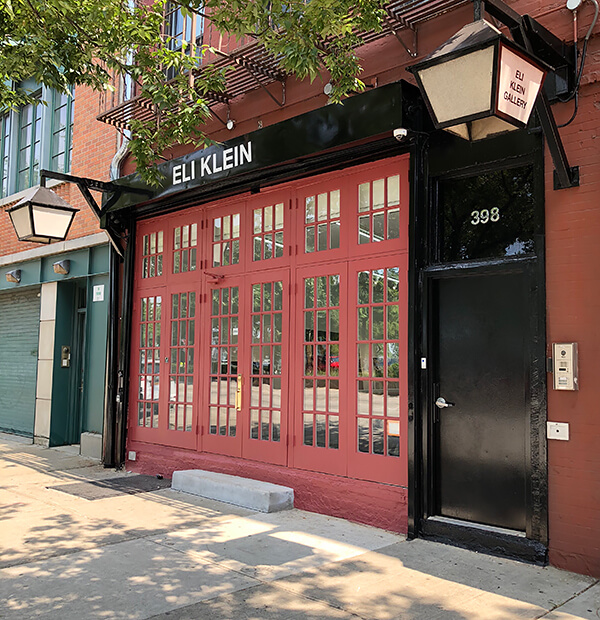Eli Klein Gallery has an international reputation as one of the foremost galleries specializing in contemporary Chinese art and continues to advance the careers of its represented artists and hundreds of other Chinese artists with whom it has collaborated. The Gallery has been instrumental in the loan of artworks by Chinese artists to over 100 museum exhibitions throughout the world. It has published 40 books/catalogues and organized more than 75 exhibitions of Chinese contemporary art at our prestigious venues in New York City.
We asked a few question to its founder, Eli Klein.
All About Photo: What is your background? How did your personal journey with art start?
Eli Klein: I was born and raised in Manhattan - Greenwich Village to be specific. Growing up, I attended public school in the city and went to high school in Hong Kong. After that I attended the University of Wisconsin-Madison the Benjamin N. Cardozo School of Law. To be honest, my personal journey with art didn't have a specified starting point. It's been here my whole life. I've always had a certain level of connoisseurship for art and a love and passion for it. I come from a family of lawyers but we collect art and we've always loved art.
Why did you decide to open a Gallery in NYC in 2007?
There was nothing particularly special or symbolic about 2007. Timing is timing. I had planned to open a gallery for a while and the project came to fruition in 2007. After law school, I realized that I didn't want to do work that was monotonous and repetitive. I wanted to pursue a career where the more I put into it, the more I got out of it - something creative.
I have always wanted to engage in something that embraces my connoisseurship in art and this was a natural extension of that. It was a gamble for me. I had never worked in a gallery before and I didn't study art history in school. With respect to operations, selling art, placing art in museums, observing regulations, and everything else a gallerist had to do, I was self taught and learned on the job. And you can imagine those were some expensive lessons!
Eli Klein Gallery focuses on Chinese artists - what led you to that choice?
My first two shows were set up well before my gallery opened. The first was a 2007 show called Referencing Alexander Calder: A Dialogue in Contemporary Chinese Art, which featured unique works by modern artists such as Calder, Picasso, and Miró juxtaposed with the works of living artists. My second show was a photography show featuring 13 Chinese artists called China Now: Lost in Transition. Back then, I wasn't formidable enough of a dealer to even realize the best way to present photography. The process of mounting, glazing, and presenting, photography is actually very specific and unique. I just thumbtacked photos to the walls.
But the fulfillment I received from my second show was so much greater than that from my first. The feedback from institutions, critics, and the media was also positive and encouraging. I had always known that I wanted a portion of my gallery to focus on Chinese artists, but I realized in that show that it was so difficult logistically working with China (in terms of processing sales, working with the media, coordinating shipping) that I would have to focus solely on Chinese art or not at all. I quickly realized that I wanted to stick with Chinese art but that I would have to put all my effort into understanding the culture and market of China. It was going to be all or nothing. So I went all. Since then, my shows have, with a couple of outliers, focused on Chinese art.
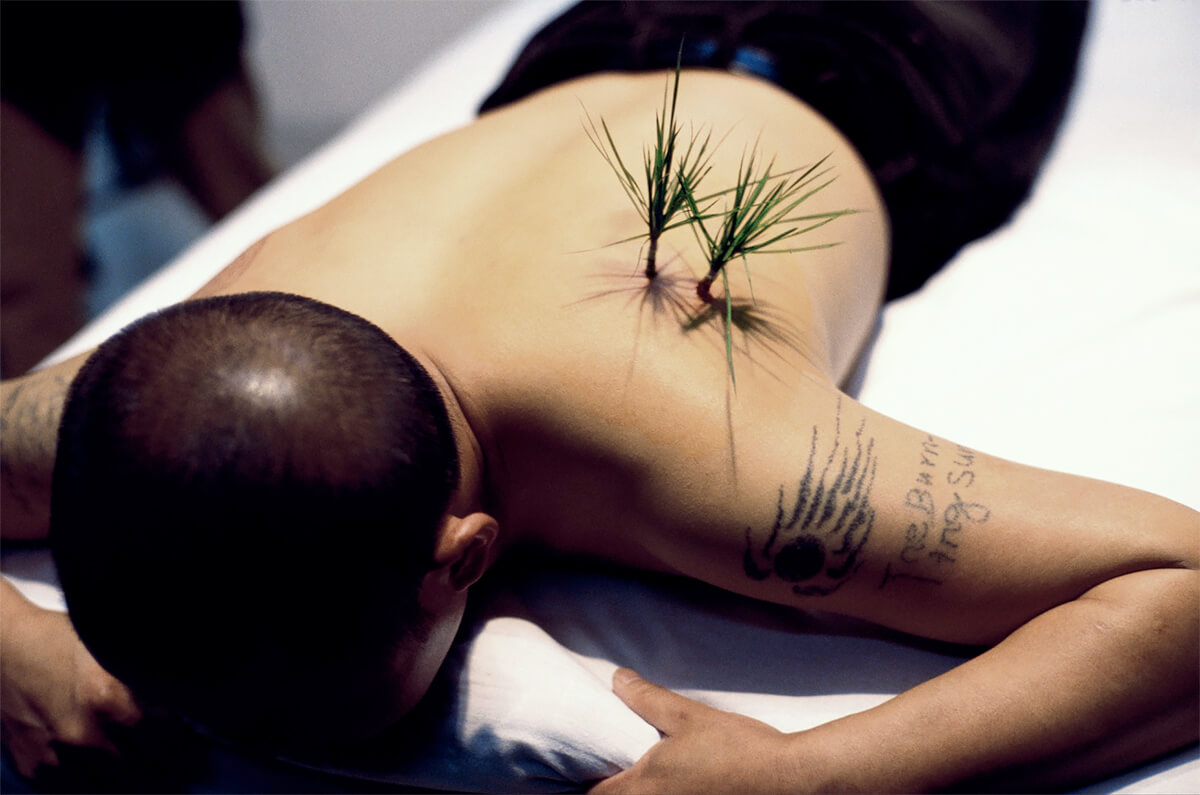
© Yang Zhichao, Planting Grass, 2000, past exhibition Force Majeure
I'm very careful in selecting new artists for my gallery. I've learned to consider an artist as a full person. That means taking into account dedication, personality, artistic practice, sources of inspiration, intellectualism, and potential for evolution. Talent is only 50% of what I consider. I make sure to note where the artist is in their career, what potential they have, whether collectors and museums will be happy if their work is placed with them, which curators they work with, even who their friends are. It's a holistic evaluation.
How would you describe the program and vision of your gallery?
My program is dedicated to Chinese contemporary art. One of the major reasons for that choice is my desire to bring two cultures together. I've always felt that China and America are the world's two major superpowers. By introducing Chinese contemporary art to a Western audience in New York (the center of the art world in America), my gallery aspires to bridge this cultural divide. It's a form of osmosis. In some ways I think that this is a higher calling than working with local artists in New York. I hate to say that my job is more important than that of other gallerists, but in a way it is, especially with the current divisive nature of America's cultural fabric.
Do you often travel to China?
I've travelled to China close to 50 times in total. I travelled more in the beginning, around 4 or 5 times a year. As my reputation has solidified and I've proven myself to be a man of his word, however, face time is less necessary. These days I only go twice a year, for three weeks at a time: Shanghai Art Week in November and Hong Kong Art Basel in March.
What are your criteria to select a good piece of art?
I ask myself if it is an ideal representation of an artist's work, and I consider if it is rare and sought after.
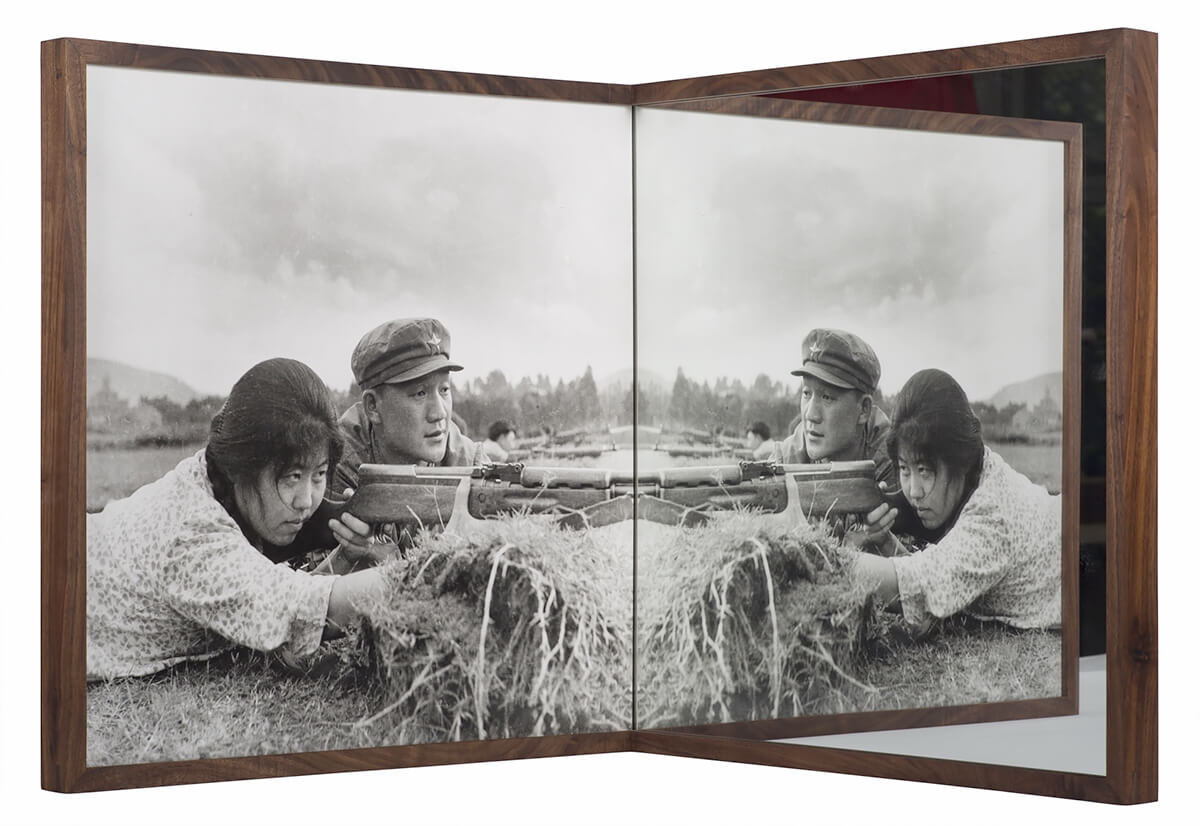
© Cai Dongdong, Practice Shooting, 2015, represented by Eli Klein Gallery
What characterizes the contemporary Chinese art scene is two simple words: upwards trajectory. The Chinese art scene is as strong as any art scene could possibly be. China is a burgeoning superpower and its internal socioeconomic dynamics will continue to enhance the formidability of Chinese contemporary art. It's an incredibly powerful art form.
Is there a Chinese aesthetic?
Chinese art tends to tell more stories than Western art. These stories are based on cultural and socioeconomic happenings within China. Of course, it can often be easier or more forgiving in China to tell stories through art rather than through words or the written language.
What are your predictions for the future of the Chinese art world?
Simply that it is very vast. Period. The Chinese art world follows China. As the future of China is limitless, so is its art.
What advice would you give to a new collector?
Buy what you love from a dealer who you trust and respect.
Who is the most recent artist to join your gallery and why did you choose him/her?
Lai Chiu-Chen. I chose him because I was blown away by his paintings in Shanghai when I saw them during Art Week. I was with a collector and another gallery owner, both of whom I greatly respect. They were in complete agreement with me when we encountered his pieces and they were just as deeply impacted as I was. Of course, I greatly respect their opinions. Lai's work hit all the cores for me and I truly felt like Lai's work would connect with a Western audience.
Our current show,
Lai Chiu-Chen: 99% Unreal, is his debut solo show in the United States. It features fifteen iconic paintings completed between 2012 and 2019. Lai's paintings, created during the explosion of access to information, present us with an intriguing look at the portrayal of mundane pop references co-existing within a setting of social, political and economic turmoil. His paintings are very witty and thoughtful. The exhibition runs from August 4 to October 10, and is viewable by appointment.
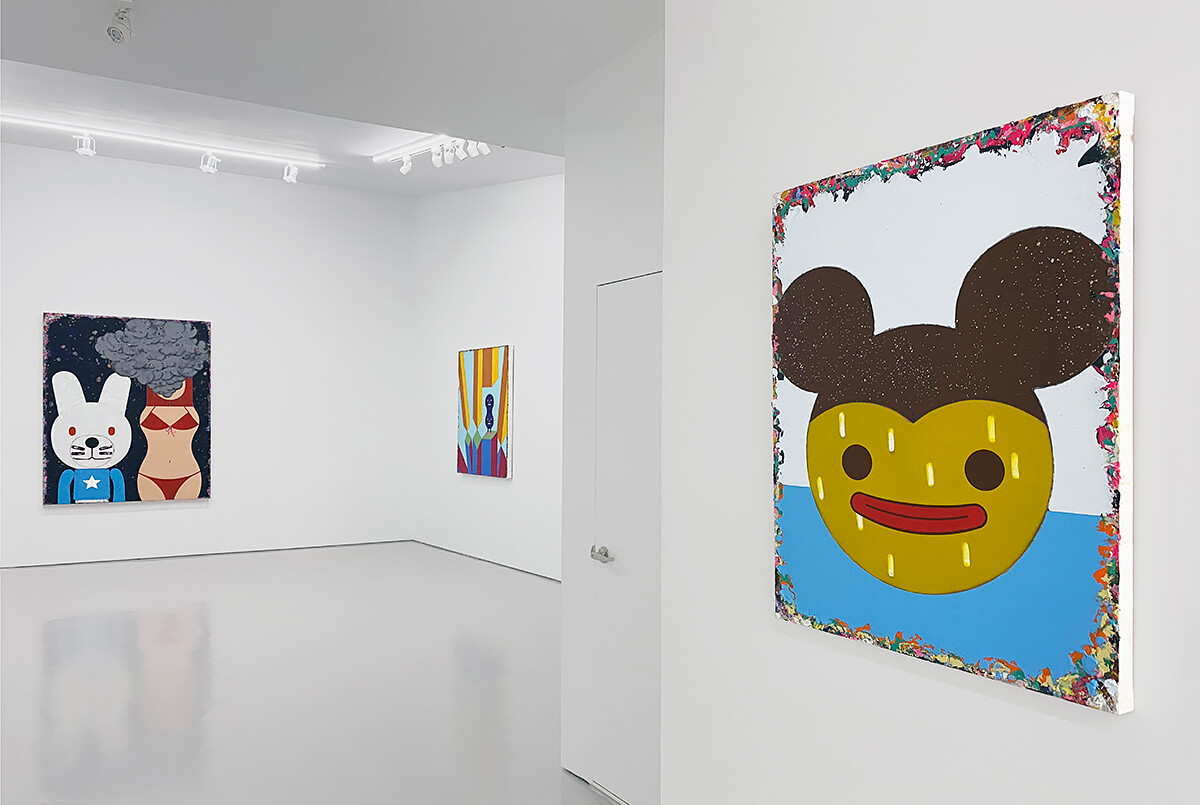
© Lai Chiu-Chen, current installation at Eli Klein Gallery
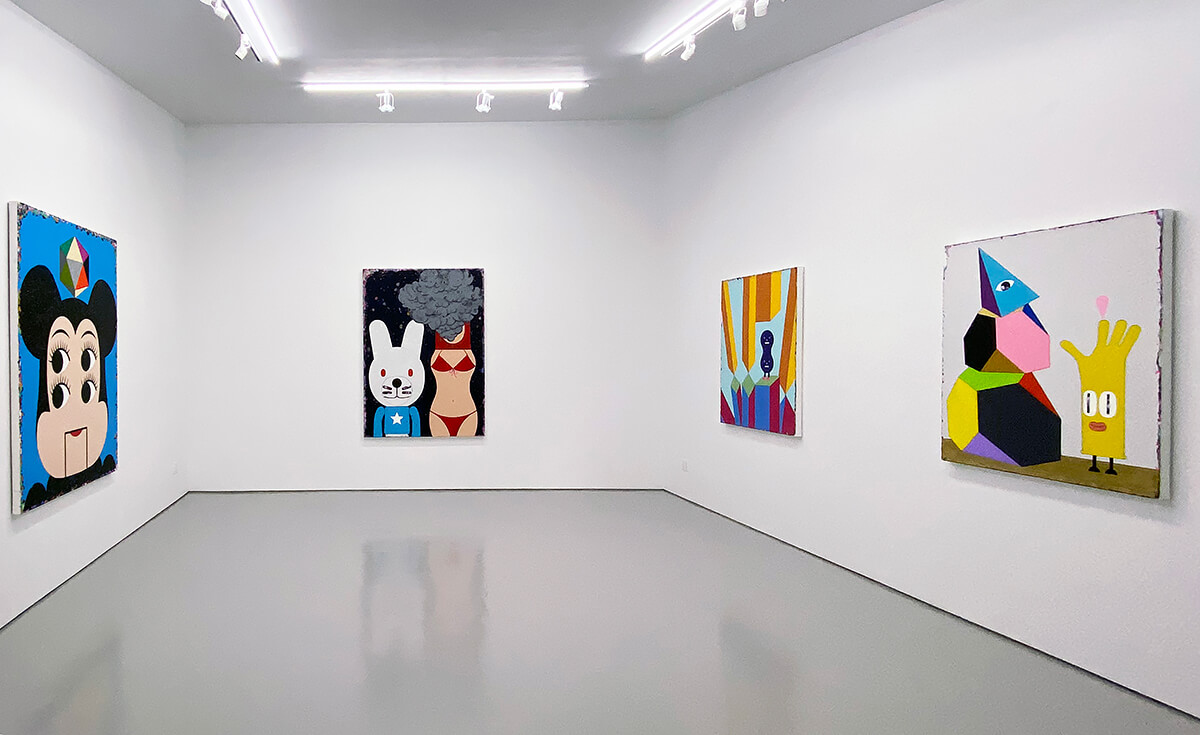
© Lai Chiu-Chen, current installation at Eli Klein Gallery
I've never liked these kinds of questions because I don't want people speculating on my good taste and insider knowledge, haha. But in all seriousness, I would recommend keeping an eye on our gallery's upcoming plans and programs.
In the era of the internet, what is the value of having a physical space?
It's everything. Having a physical space is nurturing. It's an irreplaceable thing - being able to have public exhibitions and to show curators and critics and collectors the pieces in person. The brick and mortar model of a gallery is as important as it ever has been. That's just how it is. The physicality of art is something that can't be replaced in the era of the internet.
What are the biggest challenges and advantages of running a gallery today?
The biggest challenge is to keep growing. There's no ceiling as a gallery. The most rewarding aspect is simply making everyone happy. When the artists are happy, the collectors are happy, the public is happy, the museums are happy, the critics are happy, the staff is happy, that's when I feel the most fulfilled.
Your top 3 art destinations in the world?
Outside of New York: HK, Beijing, and Shanghai. But I'm biased.
If you would have given three wishes, what would you wish for your gallery?
I'd wish for everything to go smoothly. I'd wish for everything to be presented in a classy, high-level, appropriate, and historically important way. My gallery will continue to strive to put up exhibitions of historical importance in the future.
